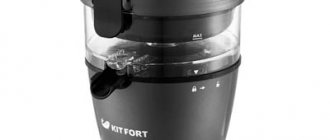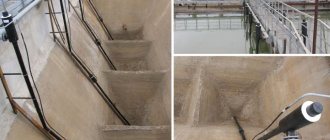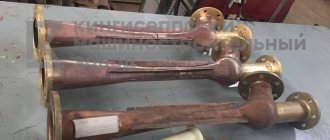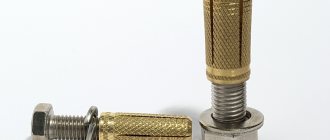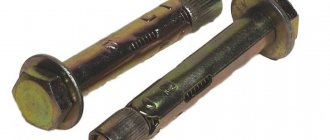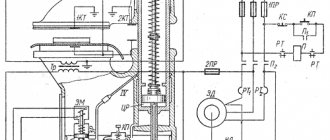Chemical hardware ensures reliable fastening
In the porous and fragile structure of cellular concrete products, it is quite difficult to reliably fasten conventional hardware. Therefore, chemical anchors for foam blocks are increasingly being used for this purpose. What is it, what types are they, the pros and cons of these fasteners - we will consider in more detail in this article.
What it is?
Adhesive anchor, liquid dowel, injection mass - all these definitions of chemical anchor are used in the simple language of workers.
A fastening element consisting of a regular reinforcing rod or one with an external thread, a sleeve with a screw surface inside and a special adhesive composition (made of synthetic resin) is called a chemical anchor. This type of fastening system was first used in the field of mining - with its help it was possible to mount various fasteners to loose foundations. Later, anchors became popular in construction. Chemical materials provide reliable fixation, unlike traditional types of anchors.
Chemical anchors are a complete and complex system, which includes additional drilling tools, mixing guns, precision dispensers, scrapers and surface cleaning brushes, and others. The adhesive composition is selected individually, taking into account installation conditions and base material. Most often, a chemical anchor is used for plain or porous concrete, for brick structures, for sandstone or limestone. The mass penetrates into the base, into its pores and cracks, the synthetic components harden - and a reliable monolith is formed, which holds the part.
Liquid dowels are indispensable for very high and pulling loads; they can be used in the construction of balconies, bridges, and canopies at the entrances to buildings.
Selection rules
Before purchasing, it is important to carefully read the instructions for the chemical anchor. Manufacturers always indicate the types of structures and base materials to which a particular composition is suitable
It is equally important to take into account the temperature conditions when working with the product, permissible loads on the structure, and possible humidity range. In addition, the anchor must meet the conditions of use according to the following indicators:
- types of fastening;
- fastener placement options;
- dimensions of metal rods;
- hole depth;
- curing speed;
- the need for a mesh sleeve.
For cartridge anchors, you will have to additionally buy a special dispenser gun, which is capable of mixing two components of the composition and dispensing them into a special spout. The price of such a product varies from 1300 to 7000 rubles.
Advice! Ampoule guns are cheaper - from 700 rubles, although you can use a regular drill instead.
What is a chemical anchor?
Often builders are faced with the problem of how to install a product in a loose foundation. Some people have heard about new materials and want to know about chemical anchors - what is it? This material, unlike conventional metal bolts, requires the use of special glue. This mixture is in addition to the main metal part of the fastening (reinforcing rod, steel sleeve, threaded nut) and allows you to securely attach the part to any base.
Complete with liquid anchor they often sell a drilling device, an adhesive mixture dispenser, and a brush for cleaning drilled holes. Externally, a chemical anchor looks like a tube of sealant. Many manufacturers do not disclose the exact composition of the glue, but it is known that it necessarily contains synthetic and natural resins, a hardener, quartz sand, and the binding element is cement.
How does a chemical anchor work?
To mount such a massive object, such as a gate, stair railing, plumbing equipment, or satellite dish, you need a special fastener called a chemical or liquid anchor. Installation occurs in the following order: glue is fed into the drilled hole and a metal bolt is inserted; as a result of the chemical reaction that occurs between the components of the adhesive solution, the mass gradually polymerizes and hardens.
Sequence of work
Studs are used to implement dead-end or through fasteners
To create a strong mount, it is recommended to follow this algorithm:
- A cylindrical hole is drilled with a drill and shaped into a cone. The expansion is located in its depth;
- the resulting recess is cleaned, for which a pump can be used;
- A centering sleeve, also called an anchor sleeve, is inserted into the base. Anchoring can be carried out with or without this element;
- a chemical solution is poured through the sleeve, for which a gun is used;
- a pin (threaded anchor) is screwed in;
- The fastener is left until the solution has completely hardened, which is usually realized after 48 hours.
A set of high-quality chemical fasteners, such as Hilti anchors, includes a convenient package with a dispenser, which simplifies installation. The master achieves high structural strength.
Main types and areas of use
The liquid fixative is produced in ampoules for single use or tubes designed to make up to 500 connections.
The ampoule device is a cylindrical capsule filled with an adhesive composition, which is inserted into a pre-drilled hole. A pin or reinforcement is screwed into the cavity, and the shell of the chemical anchor is destroyed.
A two-component mixture of resin and hardener, mixed with the threaded protrusions of the metal part, flows out and fills the hole and pores of the base. When the mass hardens, a reliable connection is formed that can withstand high tensile and shear forces.
For liquid anchor in tubes, a construction gun is used, into which a cartridge with a mixture and a mixer attachment is placed. When it rotates, the chemical elements are mixed, and the polymerization reaction begins. The hole is filled with glue and metal fasteners are inserted. After the solution has hardened, the connection is loaded.
The cartridge with the remaining solution can be reused. To do this, screw on a new mixer attachment. The shelf life of chemical anchors for concrete is up to 12 months.
The composition of the concrete mixture includes additives and deoxidizing agents to slow down the corrosion of reinforcement. This glue is usually of a thick consistency and is used in conjunction with smooth rods or pins.
Threaded anchors require greater fluidity and an accelerated hardening time. In these cases, the parts are glued in with a semi-liquid solution.
Injection anchors are widely used in construction and repair work, where the base is made of loose materials - slag and foam blocks, hollow bricks, slotted or cellular concrete, and the load on the fastenings is quite high. This:
- external structures - wall lanterns, fences, metal or reinforced concrete flights of stairs, supports, canopies;
- internal - plumbing equipment, ceiling lamps, storage water heaters, suspended air conditioners.
Liquid anchors are indispensable in the construction of frame buildings, fastening blocks to the supporting system, heavy ceilings, equipment and scaffolding.
Chemical fasteners allow advertising banners, antennas, radio masts, and road billboards to withstand dynamic loads. Resistance to water is a valuable quality when used in underwater and hydraulic structures - swimming pools, dams, sea or river piers, water parks, and sewers.
Old brick walls with many pores and cavities are restored using liquid chemical mixtures for fasteners.
Design and types
A chemical anchor is a fastening element containing:
- special adhesive composition;
- metal sleeve with thread inside;
- male threaded stud or regular rebar.
The adhesive composition in capsules is intended for installation of one anchor. To install many products, it is better to purchase tubes or cartridges
The metal elements of a chemical anchor can be made of galvanized or stainless steel of varying degrees of strength. The material used depends on the purpose of the fastener.
The peculiarity of using a chemical anchor is that an adhesive composition is injected into a hole in concrete, aerated concrete, brickwork or any other material, which, after polymerization, ensures exceptional reliability of the resulting connection.
Advantages of a chemical anchor compared to an expansion dowel in hollow building materials (click to enlarge)
The adhesive composition of the chemical anchor fills all free pores, providing rigid fixation even in “problematic” materials
The composition of the glue is kept a big secret by the manufacturer, but it is assumed that it includes the following components:
- artificial resin based on polyester, polyurethane and acrylic;
- fillers that provide good strength characteristics of the formed joint (such fillers are quartz sand and cement);
- a hardener that is responsible for the speed and quality of polymerization of the adhesive composition.
Chemical anchor HILTI complete with mixer and extension
As is clear from the above composition, all components of such glue are mixed immediately before installing the anchor bolt. Modern manufacturers produce adhesive compositions for chemical anchors:
- in special capsules, the diameter and height of which correspond to the dimensions of the hole for placing the bolt;
- in cartridges and tubes (the internal volume of such containers is divided into two compartments, one of which contains the adhesive composition, and the other contains the hardener).
The approximate consumption of the adhesive composition can be determined in advance
When using capsules, as stated in the detailed instructions for such elements, they are the first to be inserted into the hole. Mixing of the components of the adhesive composition and its further polymerization occurs due to the fact that a metal pin is inserted into the hole, which destroys the capsule shell and the internal partition between its compartments.
The technology for using cartridges and tubes, the internal compartments of which contain glue and hardener, looks somewhat different. To use such elements, a special gun is required, with the help of which the components of the mixture are squeezed out, while simultaneously mixing, into the cavity of a pre-made hole.
Manufacturers rating
Compositions from different manufacturers are available on the market. At the same time, the chemical anchors described below can boast of proven quality.
"Titanium"
The basis of the Titan EV-I composition is polyester resin. The dried mixture can work at temperatures up to +80 degrees, while complete polymerization at +25 degrees occurs in just 3 minutes. There is a winter version of Titan EV-W anchors on sale, which can be applied even at -18 degrees.
Sormat
The Finnish company Sormat produces anchors in cylinders and ampoules of various sizes, as well as disposable nozzles for their application. The adhesive is made on the basis of polyester resin and is intended for fastening medium-heavy structures.
BIT
This adhesive composition is used even at sub-zero temperatures (down to -18 degrees). Its base is epoxy acrylate resin.
Main characteristics of the material:
- capable of connecting even heavy concrete structures;
- Suitable for underwater use;
- has low viscosity;
- easy to use;
- does not have a pungent odor.
"Moment"
The chemical anchor “Moment Fastener CF-850” is used for fastening concrete, hollow and solid bricks, foam concrete, and holds heavy structures perfectly. It ensures rapid hardening and high reliability of fasteners and does not contain styrene.
Hilti
The composition of this brand, called Adhisive Capsule Anchor, is based on methacrylic and polyurethane resins, hardener and quartz sand, and is available in capsules and cartridges. It is successfully used even in areas of high seismic activity and under water.
Chemical anchors are an excellent solution for organizing quick and high-quality fastenings during the construction of various structures and structures. Despite the high price, this material has many advantages and makes the task easier for the master.
How to install an anchor bolt in concrete
The whole process is quite simple, the main thing is to take the measurements correctly and implement everything as accurately as possible. But there are several nuances that need to be taken into account.
Practical tips for installing anchors in concrete:
- The strength of the fastener is influenced not only by the anchor, but also by the quality of the base material (concrete in this case), proper preparation for installation, taking into account the material of the attached structure and the design of the bolt itself.
- If a layer of finish is applied to the wall, the hole must be deeper because the finish is usually less durable than concrete.
- It is advisable to take a drill 0.5 millimeters thinner than the diameter of the future hole.
- When working with a hammer drill, it is best to use a tip made of a special carbide material.
- Read the instructions carefully - the packaging with anchors should indicate the permissible force and the maximum number of revolutions.
- When screwing the anchor into, under no circumstances should you twist it all the way, as the material may collapse.
Eternal fastener: concrete dowel
A dowel is a spacer element made of polypropylene or nylon, which is similar in function and performance to an anchor. It cannot be used independently; it is fixed in concrete with special nails or self-tapping screws. To strengthen the fixation, it is often performed with spikes or antennae.
This type of fastening is used where there are not too large loads on the concrete - fastening shelves, TV hooks, lighting fixtures. The dowels are driven into the dowels with a hammer, and the screws are screwed in with a screwdriver or screwdriver. You will also need a regular hammer to drive in nails.
You can also find dowel nails designed for use with a mechanical gun. The fasteners in concrete are made of metal; in appearance, they somewhat resemble a bullet. Relevant where you need to hang a large number of small items.
Concrete dowel: fast but durable
Pins are those that are most often used for arranging fasteners near the edges of a concrete wall. The fastener does not require additional fixation; it is screwed into the hole, where a little epoxy glue is first poured. There is no need to drill holes - the dowel can be screwed directly into the concrete wall. If you still need to make a hole in concrete, then it is better to choose a drill (a hammer drill can damage the wall).
They screw it in with a screwdriver - and after that it is no longer possible to unscrew the dowel back. Therefore, preliminary marking must be done especially carefully.
Types of chemical-based anchors, installation
All chemical anchors are divided into two main types depending on the form of delivery of the adhesive: capsule (supplied in tubes and cartridges) and ampoule (available as one-component and two-component). It is this difference that directly affects installation, suggesting different technologies for installing the anchor.
Installation of ampoule anchors
The adhesive substance is sealed in a glass cylinder; upon direct contact with air, the viscous mixture hardens. Installation is quite simple: first, mark the location of the fastener and drill a hole, then clean it of construction dust, insert an ampoule with an adhesive into the hole made with the required depth and size, and screw a pin or reinforcement into it. At the moment of screwing in, the ampoule cracks and the glue comes out into the hole, hardens and provides a reliable connection (pieces of glass additionally reinforce the fastener).
If the glue is made of one component, then the ampoule is simple; if it is of two, then two ampoules are used, one of which contains styrene. The speed of setting of the substance directly depends on the compliance with the instructions of the air temperature and the type of chemical anchor. Two-component chemical anchors are most often used where it is necessary to ensure maximum strength (fastener strength class is 5.8) and in conditions of high humidity, in water.
The disadvantage of this type of fastener is that if the anchor for a large hole is chosen incorrectly, the resin may not completely fill it and the reliability of the connection will be low.
Installation of injection anchors
The cartridge is a small container with a spout through which the adhesive mixture is squeezed out. A tube is a small reservoir of 400-800 milliliters, which is used together with a construction gun. In terms of one fastening, the cost of such a chemical anchor is lower than that of an ampoule, and there is a wider choice of filler. The adhesive anchor can be made not only from synthetic resin, but also from polyurethane and acrylate.
Installation is carried out as follows: mark the mounting location on the concrete surface, drill a hole, clean it, squeeze out the glue and insert the dowel. The glue becomes hard and provides a reliable, durable fastening; it is used for walls made of materials with voids inside.
Often, before squeezing out the glue, a perforated sleeve or plastic or metal is inserted into the material, which does not allow the resin to spread too much over the inner surface of the monolith. There are currently no other methods of fastening in hollow materials. Depending on the depth and size of the hole, one cartridge or tube charge is enough to make many fastenings.
Dowel for concrete - types of fasteners
Builders and private developers sometimes have to install a dowel in a foam block. To accomplish this task, dowel fasteners made of various materials are used.
Products come with a standard helical spiral or with cone-shaped ribs, the edges of which resemble spiral blades
The decision in choosing a specific type of fasteners is made depending on a number of factors:
- effective loads;
- operating conditions;
- fastening features;
- wall material.
Dowel fasteners made from various materials are used:
- metal Traditionally, steel is used, on the surface of which a protective zinc coating is applied. The metal structure is resistant to elevated temperatures and is widely used in industrial environments. The metal provides an increased level of strength when performing complex work on the installation of special pipeline equipment: water mains, sewer systems, gas networks. Metal fasteners provide reliable fixation of guides intended for installing drywall, as well as suspension of heavy furniture. The metal dowel for aerated concrete does not rotate in the porous mass, thanks to the locking collar. Galvanized metal products are distinguished by an increased price associated with the possibility of reuse and increased reliability;
- plastic. The plastic dowel for aerated concrete has a serious advantage compared to other structures. It is not subject to corrosion processes, and also provides an increased coefficient of adhesion to the cellular surface due to helical protrusions. Polypropylene and also polyethylene are used as materials for the manufacture of plastic retainers. The peculiarity of plastic fasteners is ease of installation, fairly low price, as well as increased resistance to aggressive environments. Experts advise using fasteners made of this material to fix plumbing lines and steel profiles when performing installation work in rooms with high moisture concentrations. When used in subzero temperatures, strength decreases as the plastic may burst;
Fasteners for porous building blocks are made from various materials
nylon. This is a proven material from which corrosion-resistant dowels for aerated concrete are made. Nylon, unlike conventional plastic, can be used in conditions of negative temperatures and, therefore, can be used not only for internal, but also for external work. In addition, the material, compared to polyethylene fasteners and polypropylene fasteners, has increased reliability. Nylon dowel bushings are used for mounting mirrors, fastening household electrical equipment, as well as when installing structures in window and door openings. The main disadvantage limiting the widespread use of nylon fasteners is their increased cost. Being a type of ordinary plastic, nylon used for the manufacture of dowel fasteners is superior to plastic in terms of performance and conditions of use.
There is also a frame dowel for gas silicate, brick, concrete, expanded clay concrete, gas blocks and other building materials. For its manufacture, any of the specified materials are used. The original design, which when screwing the fixing screw takes on a pancake-like configuration, allows you to increase the contact area and, accordingly, increase the reliability of fixation.
